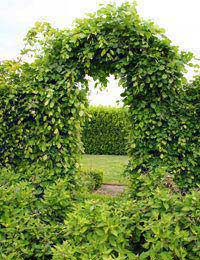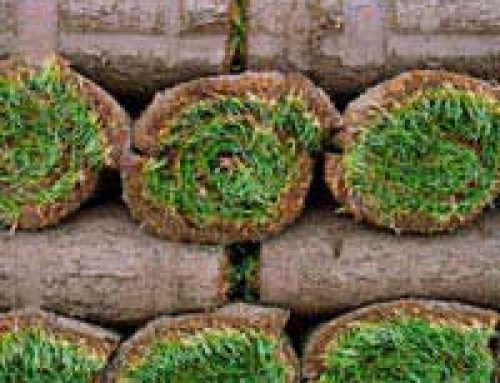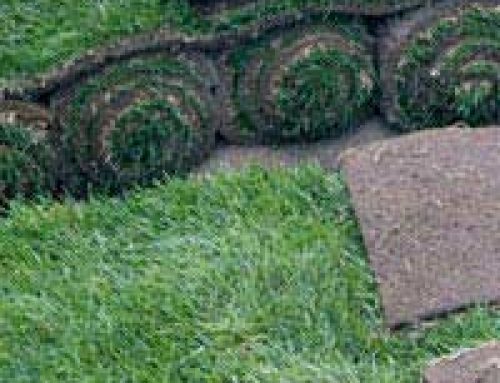
Whether grown over a trellis or pergola, against the house itself or used to scramble over an unsightly wall or fence, climbers bring a touch of the dramatic to the planting scheme. Within their ranks there is a huge array of different types, so whatever you are after – showy flowers, heady scents or all-year-round interest – there are plenty to choose.
Although the usual considerations of hardiness, preferred site, best soil type and speed of growth apply to climbers as much as any other plant, it is often easier to consider what you intend to do with yours and use this as the starting point for your selection.
Pergolas and Trellises
Climbing plants to be grown on these structures are probably best picked with an eye to when and how you tend to use that part of the garden. If you often sit out during sunny summer days, then plants such as Wisteria, Clematis or Vinis vinefera would make ideal candidates, while the scented flowers of jasmines (Jasminum) and honeysuckles (Lonicera) are perfect for the evenings.
For winter interest, you can choose evergreens, but with the exception of ivy, many are not hardy making them unsuitable for a frost-prone site. Alternatively, choosing one of the many deciduous climbers which have coloured stems or interesting bark can be a very effective way of helping to keep a year-round focal point in the garden.
Ahead of planting , it is worth taking the time to check to make sure that the pergola is in a good state of repair and is strong enough to support what may become quite a substantial weight over the years. It is always easier to do any maintenance or strengthening work before the whole structure is festooned with stems.
Growing on Walls
Picking the right climbing plant for a wall is an important choice – whether it is needed to emphasise some key architectural highlight or to spice-up an otherwise uninspiring building. The growth rate is one major consideration – as a plant which takes forever to get going can cause as many problems as one which rampages away and needs clipping every five minutes!
Growing conditions next to the wall can be very different; the soil may not be quite the same as elsewhere in the garden and often it is drier too – though this can sometimes work in your favour, particularly for south-facing walls. The micro-clime effect can sometimes make the site warm and sheltered enough to allow you to grow some of the real “stars” of the climbing plants – including the likes of Passiflora and Bougainvillia, for instance – bringing a touch of the tropics to the display.
Plants suitable for most walls include climbing hydrangeas, Clematis, honeysuckles and the old favourite, climbing roses, while Virginia Creeper or Boston Ivy are both a great choice to add a splash of autumn colour as their leaves turn crimson.
Living Screens
Few plants are better at providing a good screen to hide an ugly fence or old tree stump and it is a perfect excuse to give garden-room to some of the more rampant and invasive kinds of climber that you simply could not let loose anywhere else. Russian vine (Fallopia baldschuanica) – sometimes to be seen in garden centres labelled as Polygonum – is a prime example. Its alternative common name – “mile-a-minute vine” – tells you just about all you need to know! One of the fastest growing climbers around, making it an outstanding candidate for this job, it can reach up to 40ft or more and produces masses of white, frothy flowers in the summer.
Sometimes it is too easy to forget that this versatile group of plants can also be grown simply for their own sake – as welcome inclusions in their own right and the likes of Clematis or Schizophagma make impressive displays, especially if grown through other plants. For colour, scent or foliage, climbers can be hard to beat and there is even one – the hardy Jasminum nudiflora – which produces its delicate creamy yellow flowers in the depths of winter. Whatever your reason for growing them, there is no doubting that climbing plants can make a big contribution to the whole garden.




Leave A Comment